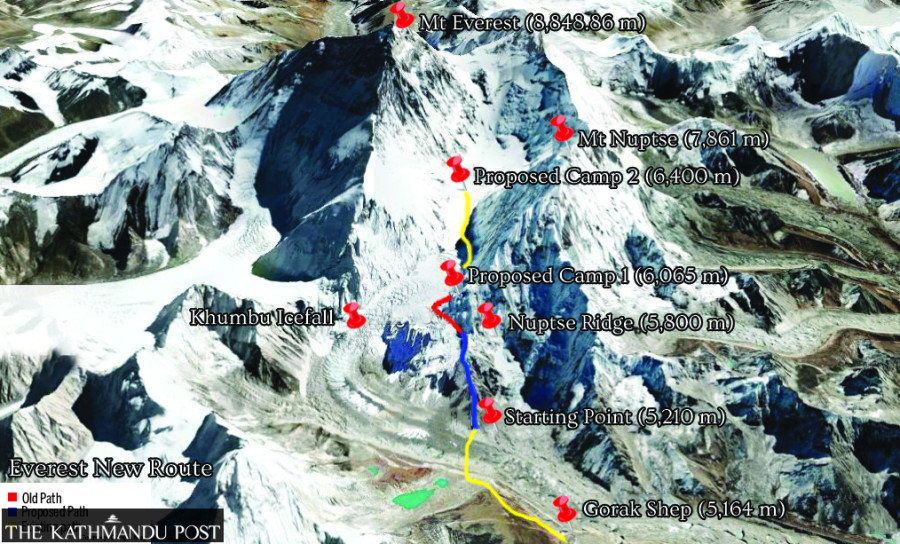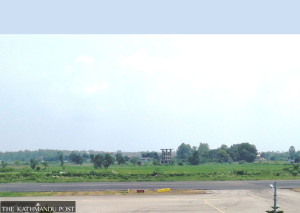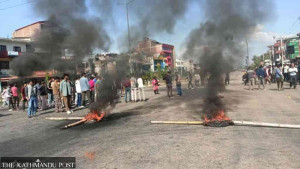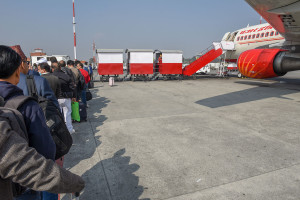National
Nepal-French team venturing to check safer Everest route
New route will bypass Khumbu Icefall, says Marc Batard, who explored the unbeaten path.
Sangam Prasain
A Nepal-French expedition team is set to leave Kathmandu for the Khumbu region on Friday to explore an alternative and safer route to reach the summit of Mt Everest bypassing the treacherous Khumbu Icefall.
Renowned French climber Marc Batard told a media in Kathmandu on Thursday that a team of eight members will spend at least a month and a half to prepare the new route and pilot it.
Marc also plans to climb Everest using the new route without using supplemental oxygen. He is 70.
In September 1988, it took Marc just 22 hours and 29 minutes to reach the summit of Everest without using bottled oxygen, which earned him an entry into the Guinness Book of Records. The record stood unbroken for 10 years.
“The new route, if it comes into commercial operation, will save the lives of climbers,” he said at the press meet. Scores of climbers have died on the Khumbu Icefall.
The Khumbu Icefall, a river of ice stretching a kilometre or so, is normally crossed during the night or early morning with climbers putting headlamps on their helmets. The first challenge for every climber is to tackle this deadly Icefall.
Normally, the route is crossed between 3am and 5am, the time when the ice blocks and the hanging glaciers are stable and avalanche risks are low.
During the day, as the sun warms the mountain, the hanging glaciers begin to melt and ice starts to crumble, causing avalanche risks.
On April 18, 2014, an avalanche resulting from a falling serac had buried 16 sherpa guides in the Khumbu Icefall that led to the cancellation of the season’s expeditions.
The Himalayan Database has recorded 44 deaths on the Icefall from 1953 to 2016.
Marc came to Nepal last spring and made an aerial survey of the proposed route.
The fieldwork started in November.
A seven-member team led by Marc and high-altitude guide Pasang Nuru Sherpa, including Marc’s son, climbed the new route from November 15. The first phase trial lasted until November 21.
The team made Gorak Shep at 5,140 metres their base camp.
“We then hiked through the Mt Nuptse ridge, the neighbouring mountain,” said Marc. The Nuptse (7,861m), Everest (8,848.86m), and Lhotse (8,516m) are the Khumbu triple crown facing one another.
“The new route follows a rocky spur below the flank of Mt Nuptse,” said Marc. “The rocky spur, a vertical cliff, is a bit difficult. But after it is climbed, the route from there becomes easy to navigate.”
Approximately, it takes seven hours to cover a distance of around 1,000 metres to reach a spot at 6,200 metres using the new route from Gorak Shep base, which adjoins Camp 1 at 6,065 metres just above the Icefall.
“This will completely bypass the treacherous Khumbu Icefall. There is no danger of an avalanche on the Nuptse ridge,” said Marc.
Camp 1 is a temporary camp where most climbers spend a night.
According to Marc, out of the around 1,000 metre-long trail, they have discovered only 700 metres. The 300-metre way was already in use.
Marc plans two camps—one at 6,200 metres and the other at 7,800 metres.
“But we need strong equipment and investment to make this route commercially viable,” said Marc.
The mountaineer said that it requires anywhere between 300,000 and 500,000 euros to permanently install metal hooks or rock pitons by drilling the rocky spur.
Rajaram Giri, coordinator of the tourism revival committee at the Ministry of Culture and Tourism, said if the new route is successful, it will lower the risk of climbing Everest.
According to the Department of Tourism, an agency that issues climbing permits, 200 people have been granted permits to climb the world's highest peak as of Thursday.




 13.12°C Kathmandu
13.12°C Kathmandu















